#charlels dickens
Text
The Many Illustrators of
A Tale of Two Cities
2: Rowland Wheelwright
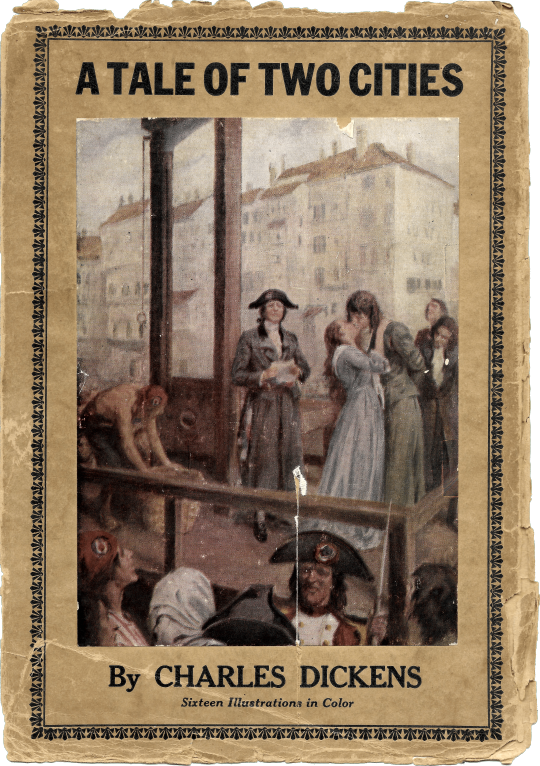

That's right, we're jumping centuries and mediums!
...specifically, from Phiz's engravings for the original 1859 monthly installments to Wheelwright's paintings for this 1925 edition!
(warning: in the following, there is some violent imagery, and one image in the third grouping has blood)

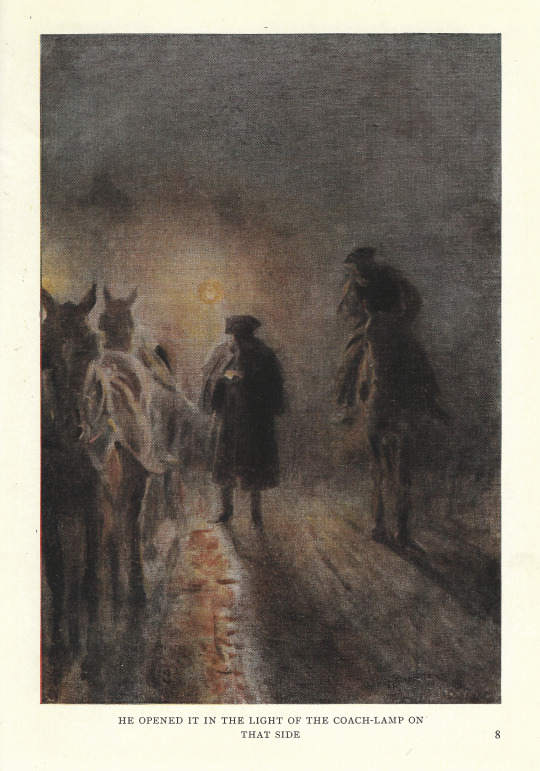
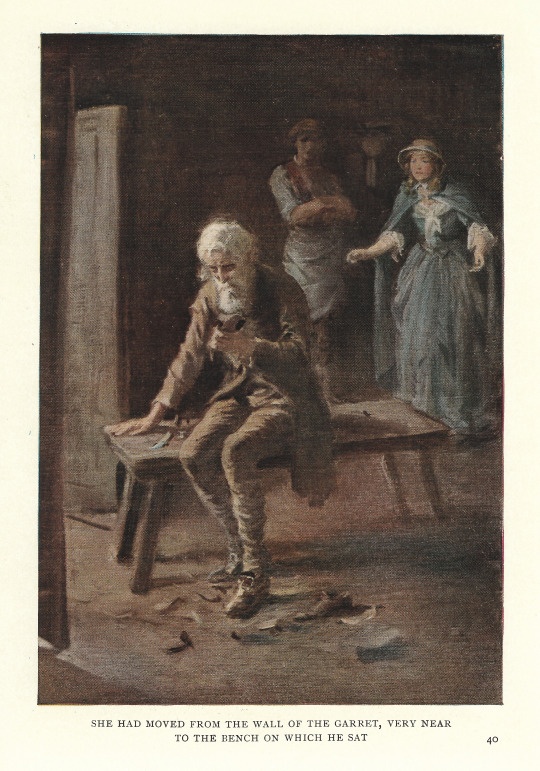
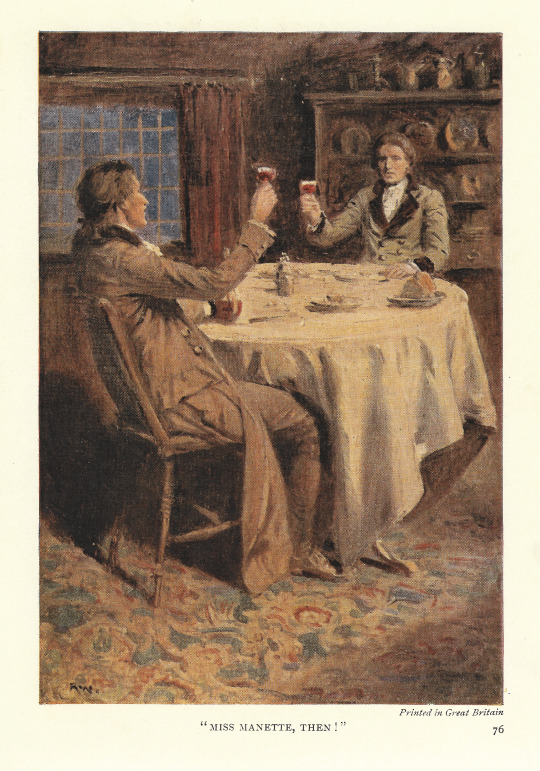
As I'd mentioned in the announcement post, these illustrators will be highlighted completely out of chronological order to make it more organic when I continue to find more and more artists' work to add to the queue - so I wanted to start off with a particularly dramatic leap in time (and style!) to give a sense of the sheer variety of art we're going to be looking at here!
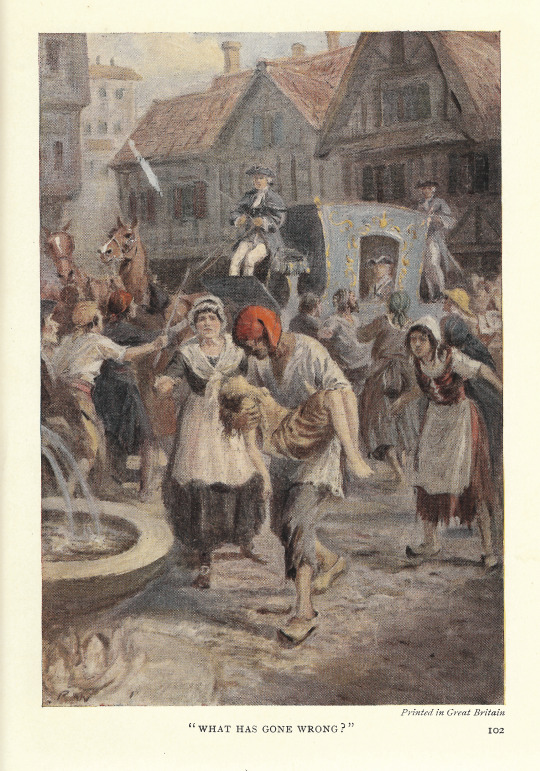
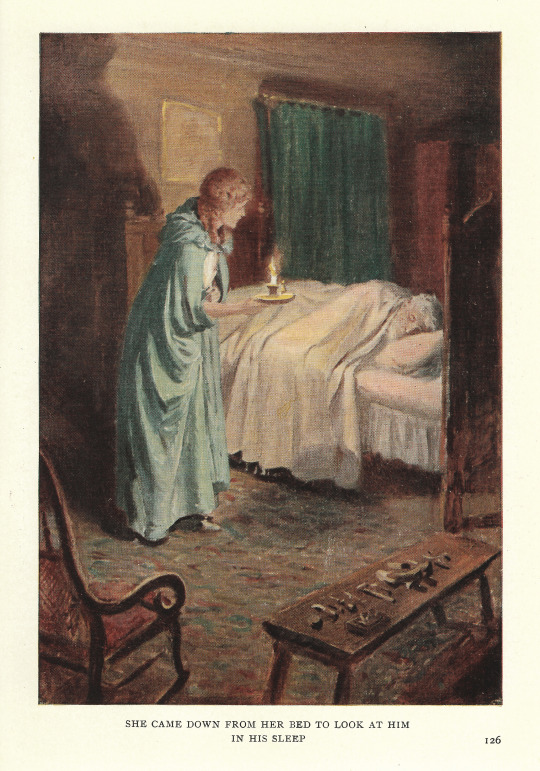
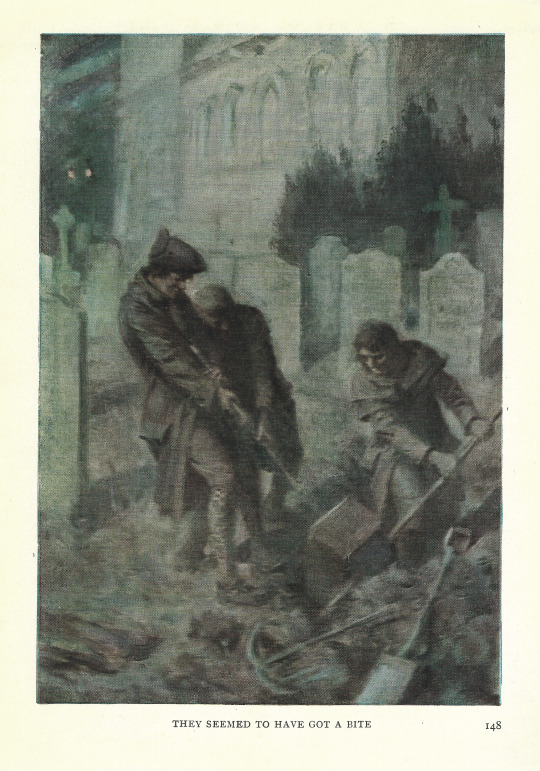
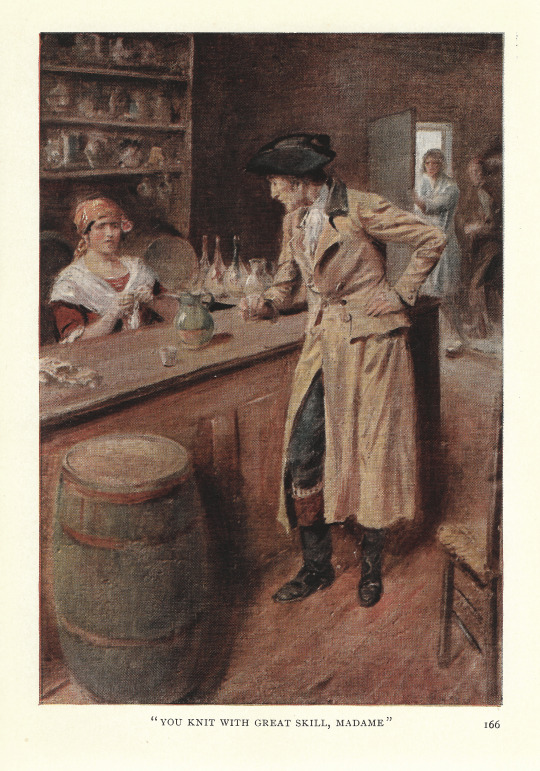
This also happens to be one of the sets that I scanned myself - most of these beautiful illustrations haven't anywhere on the internet (by my own intensive research at least!) until now.
It's my joy to finally get to share them!
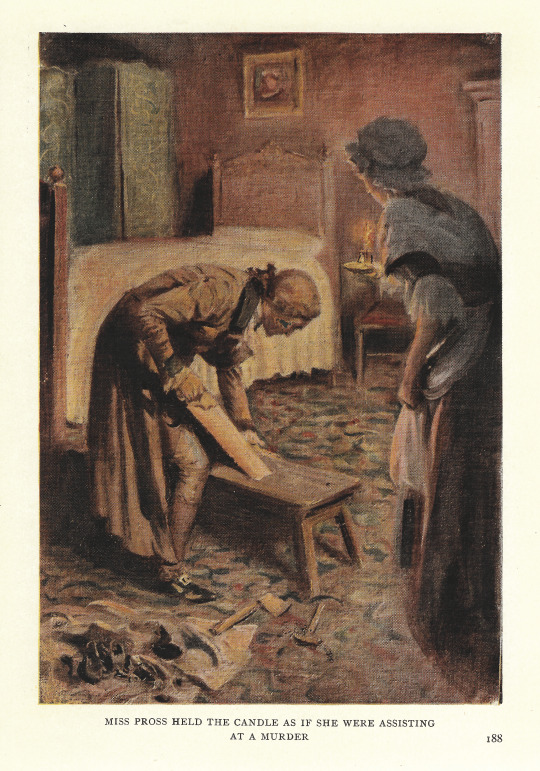
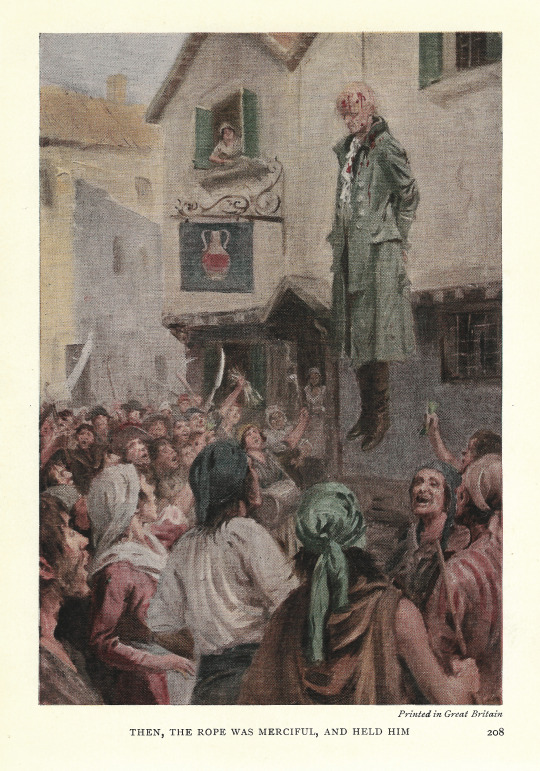
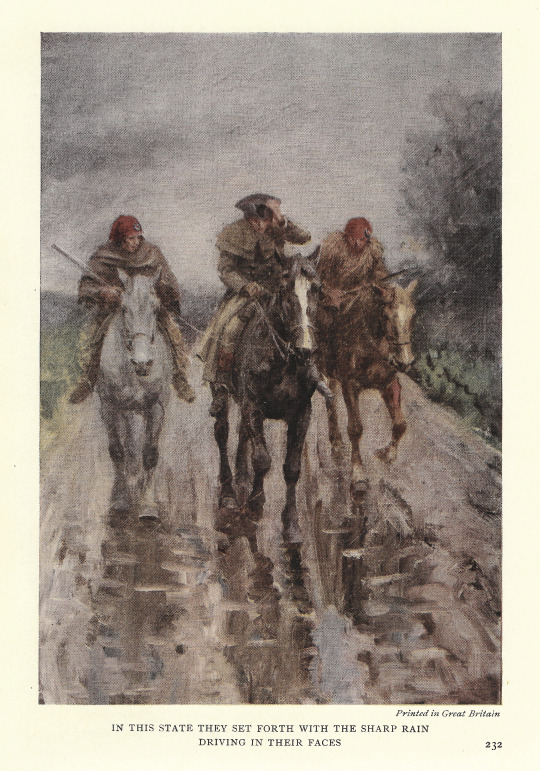
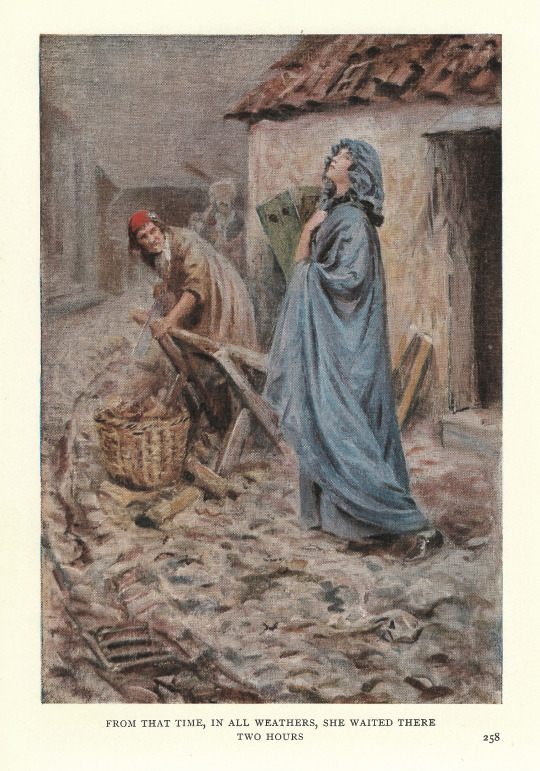
Overall, I want to give my own opinions and takes on the work of each illustrator as little as possible so that everyone can experience it in their own way, but the true beauty in his attention to detail in color, characterization, costuming, composition, and shadow calls for some comment.




This is the work of someone who loved and appreciated both the story itself and the act of illustrating it - I'm grateful to him for bringing these images into existence.
& the standard endnote for all posts in this series:
This post is intended to act as the start of a forum on the given illustrator, so if anyone has anything to add - requests to see certain drawings in higher definition (since Tumblr compresses images), corrections to factual errors, sources for better-quality versions of the illustrations, further reading, fun facts, any questions, or just general commentary - simply do so on this post, be it in a comment/tags or the replies!💫
#A Tale of Two Cities#AToTC#dickens#charlels dickens#classic literature#victorian literature#illustration#illustrators#Rowland Wheelwright#1920s#my scans#alright this is my first one queued!#having a lot of issues maintaining my focus while doing alt text so i'm kind of changing my approach to the broader project by like#winging it basically#gonna queue stuff out of order and do stuff like that#so it feels good to be really doing that! queuing this a week and a half before it's gonna be posted!#and i'm just so excited to be posting these in particular they are just so lovely#darnay's head held high as he holds his spouse and child tight...the stress on carton's face and the hand on darnay's shoulder...#the entire pross and defarge drawing! ugh! this man understood Story#even the simple detail of charles holding his hat to his head in the driving rain....it's almost always about the details man it really is
9 notes
·
View notes
Text
It's the birthday of novelist Charles Dickens (books by this author), born in Portsmouth, England (1812). When his father was thrown in debtors' prison, 12-year-old Dickens was forced to leave school and work in a factory, repetitively labeling jars of shoe polish for 10 hours a day in miserable conditions. Dickens' father inherited money and was able to leave prison, and Dickens went back to school, but he remained bitter about his childhood. Many years later, when he was famous and his father was asking for money, Dickens wrote to a friend: "I am amazed and confounded by the audacity of his ingratitude. He, and all of them, look upon me as a something to be plucked and torn to pieces for their advantage. They have no idea of, and no care for, my existence in any other light. My soul sickens at the thought of them."
By the mid-1850s, Dickens was a popular and successful writer; his novels included The Posthumous Papers of the Pickwick Club (1836-37), The Adventures of Oliver Twist (1837-39), The Life and Adventures of Nicholas Nickleby (1838-39), A Christmas Carol (1843), and David Copperfield (1849-50). In 1856, he had finally earned enough from his writing that he was able to buy a home in the country, an estate called Gad's Hill Place near where he had grown up. He said, "I used to look at it as a wonderful Mansion (which God knows it is not) when I was a very odd little child with the first faint shadows of all my books in my head."
The same year that he bought Gad's Hill Place, Dickens helped his friend Wilkie Collins write a play called The Frozen Deep (1856). Dickens hired the cast, which included an 18-year-old actress named Ellen Ternan. Forty-five-year-old Dickens fell in love with Ellen and became increasingly frustrated by his marriage of more than 20 years and the 10 children he had to support; he felt that his wife, Catherine, did not match his energy and intellect. He wrote: "Poor Catherine and I are not made for each other, and there is no help for it. It is not only that she makes me uneasy and unhappy, but that I make her so too." And in another letter, he said that he would like a prize "for having brought up the largest family ever known with the smallest disposition to do anything for themselves." A year after meeting Ellen, Dickens bought her a gold bracelet, which the mailman mistakenly delivered to Catherine. A month later Dickens and his wife separated; hoping to squash any rumors, he published an official notice in several major newspapers explaining that the separation was mutual and "involves no anger or ill-will of any kind." Dickens' affair with Ellen Ternan lasted for the rest of his life, but he was very careful to keep her out of the public eye, even using fake names to buy her homes.
For the next decade or so, Dickens wrote less and toured more. He had given a couple of successful charity readings of A Christmas Carol, and he knew a business opportunity when he saw it. His first tour consisted of 149 performances in 49 towns throughout England, Scotland, and Ireland. He performed alone on stage, with dramatic lighting, a maroon curtain, and a red reading stand. There he had selections from his novels, covered in performance notes. Dickens used different voices for different characters and acted out the dramatic parts. His most popular reenactment was of Bill Sikes' murder of his lover Nancy from Oliver Twist. One audience member wrote: "Warming with excitement, he flung aside his book and acted the scene of the murder, shrieked the terrified pleadings of the girl, growled the brutal savagery of the murderer [...] It is here, of course, that the excitement of the audience is wrought to its highest pitch."
His tours were wildly popular, with scalpers hawking tickets outside the theaters, and audience members frequently crying and fainting. In the late 1860s, Dickens gave a reading tour of the United States, performing 76 times even while his health failed. He suffered from repeated small strokes, one of his feet was so painful that there were times he couldn't wear a shoe, and by the end of the American tour he could barely eat solid food. His friends, family, and doctor urged him to stop — they were particularly concerned that his reenactment of Nancy's death was taking a huge toll on his health. His son declared it the best thing he had ever heard, and told him never to do it again. Back in England, he continued his performances at the same level despite giddiness and paralysis. His doctor confirmed that Dickens' heart rate skyrocketed when he performed, and finally put an end to the tours. Dickens went to work on his final novel, The Mystery of Edwin Drood, but before he could finish it — less than three months after his final public reading — he died of a cerebral hemorrhage at the age of 58.
http://writersalmanac.publicradio.org/index.php?date=2014/02/07
#charlels dickens#famous novelists#famous 19th century english writer#life of charles dickens#concise bio of charles dickens' life and works#reading tours of charles dickens#Writer's Almanac - NPR
1 note
·
View note